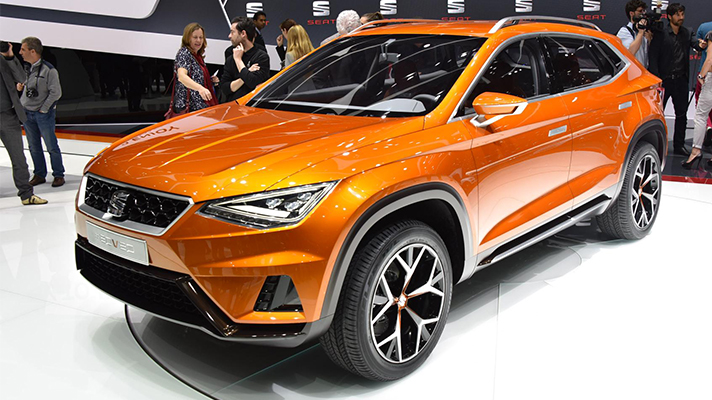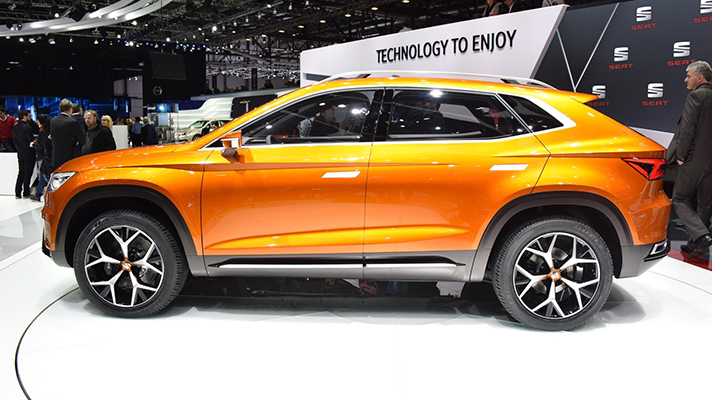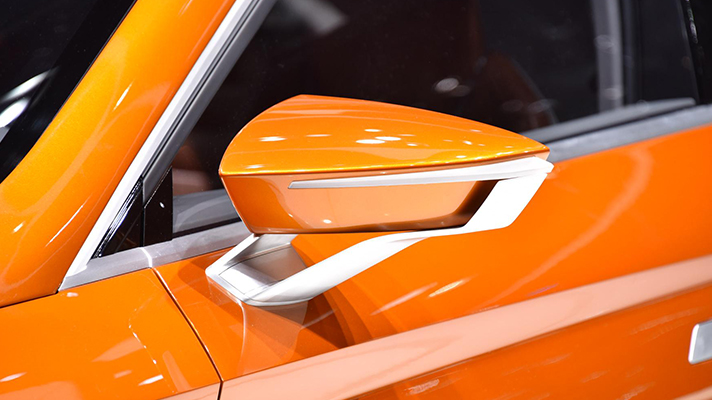
Seat SUV ‘inspired by Iron Man’
Seat - supposedly the sporty, youthful arm of the mainstream VW Group - has a hole in its range, a hole the size of a trendy urban SUV.
That's being well and truly plugged in the next five years, because you're getting three - an Nissan Juke rival, a roomier Qashqai-sized car, and potentially, by 2020, a proper full-size SUV to battle the X-Trail.
Seat's headline act at the 2015 Geneva motor show was its tan-tastic 20V20 concept, which promises the styling and interior design ideas you're likely to see in production Seat SUVs within the next few years. We met with the company's design boss Alejandro Mesonero-Romanos to ask why, in such an overcrowded market, customers would buy a Seat crossover instead of a Nissan, Skoda, or even an Audi?
"I hope this is the one you buy with your heart - because you want it," Romanos replies. In the metal, the 20V20 is a handsome thing - covered in slashes and triangular elements but without looking fussy. Evoque comparisons are justified.
It's low too - much stockier than the ubiquitous Qashqai or Yeti - but there's decent room inside. "this is the same silhouette as the car we'll build," says Romanos. "It will get no taller - we want to be low... and dynamic."
Inside the 20V20 is where it really gets interesting. The concept has four (rock-hard) seats, and a huge boot that crams a Back to the Future hoverboard into the spare wheel well. Don't bet on that as a dealer-fit extra.
In Audi fashion, the main instruments have made way for one large LCD screen, matched by another huge telly screen housed in the dashboard. It's a touchscreen, but there's a second way of controlling it, and Seat reckons it's onto a real industry first.
Romanos produces a silver, hockey-puck-sized disc from his jacket pocket, which has a tiny screen set into its face. It's called the Seat Personal Driver Device (SPDD).
"It can be the key for the car, but it's mainly about connectivity," explains Romanos. "From here, I can set [sat-nav] routes, change the temperature, and even find my car when it is parked.
"I was watching Iron Man, and it inspired me to create this device," says Romanos, holding the glinting puck up to his chest like Tony Stark's lifesaving Arc Reactor.
Top Gear
Newsletter
Thank you for subscribing to our newsletter. Look out for your regular round-up of news, reviews and offers in your inbox.
Get all the latest news, reviews and exclusives, direct to your inbox.
He lowers the SPDD puck to the centre console, where it magnetically ‘clicks' onto the transmission tunnel. He then spins its perimeter and clicks the centre - it's instantly become an infotainment navigator, just like BMW's iDrive clickwheel. Very neat.
Could Seat shrink the SPDD and make it wearable, like a magnetic smartwatch? "For sure," nods Romanos, "that is definitely the next step. Or, we can integrate it with your phone - obviously the shape will have to change, but we can see a future where your car key, smartphone and this [menu clickwheel] are all in on device. It makes sense."
Thing is, we've heard that sort of idealistic chat before. Can Seat really push this sort of thing past the beancounters?
"Yes - we could make it [the SPDD] happen by 2020," Romanos reckons. ‘The only things that have to change for this car are making the air vents bigger and having five seats. And we need some more storage..."
With that, we clamber out of the car and take a last look at what is, next to the unobtainable Astons, Bentleys, Koenigseggs and Ferraris, one of the mainstream stars of the 2015 Geneva show. Now Seat, you know the drill. Build it as the designer intended, please.
Trending this week
- Car Review
BMW iX3










